Beriev
Be-6 Madge

The Beriev Be-6 (USAF/DoD reporting name "Type 34", NATO
reporting name "Madge") was a flying boat produced by the Soviet Beriev OKB. It was capable of accomplishing
a wide variety of missions, such as long-range maritime reconnaissance,
coastal and supply line patrols, torpedo/bombing strikes, mine-laying,
and transport operations. The aircraft was of all-metal
construction except for fabric covering the rudders and ailerons. The
fuselage was divided into eight watertight compartments to improve
survive ability. The engines were installed in the bends of the wings,
with the floats on an under wing cantilever rack. Each float was divided
into four watertight compartments.
The Be-6 was
built from 1949 to 1957 at the Beriev plant in Taganrog. The aircraft
had 19 variants through its production cycle, and 123 aircraft were
eventually built. Since requirements of Soviet naval aircraft did not
change rapidly, the reliable Be-6 remained in service until the late
1960s. Some aircraft ended service as civilian unarmed transports in
Arctic regions. One survivor is preserved at the Ukraine State Aviation
Museum in Kiev, Ukraine. Beriev Be-6s operated by the Peoples
Republic of China PLANAF
proved useful in patrolling the long
coastline and huge territorial waters off China's coast. During the
1970s the original Shvetsov radial engines began to wear out with no
replacements available, so several aircraft were re-engined with Wopen
WJ-6 turboprop engines, in new nacelles, for a new lease of life and
were redesignated Qing-6.
The
Kit
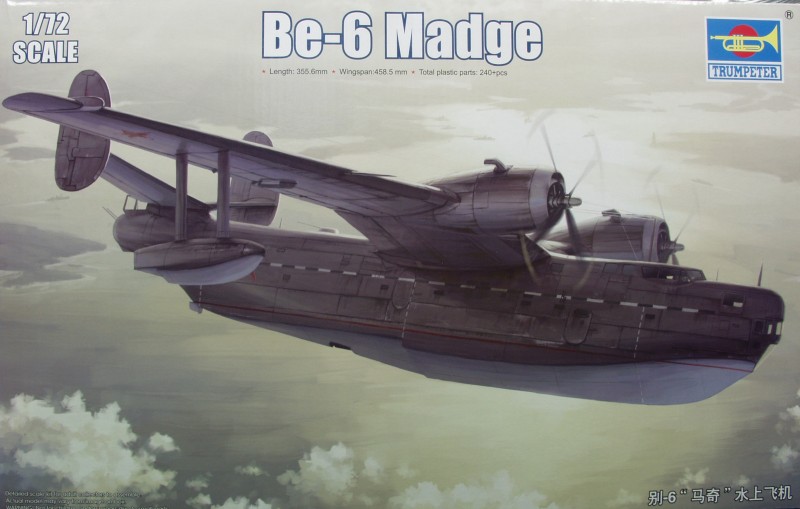
The
Trumpeter kit comes in a tray
type top open box made from thin corrugated cardboard and has nice
artwork on the top cover. Inside we find six sprue frames molded in a
medium gray color and one large and two small sprue frames of clear
parts. All sprues are contained in their own plastic bags and in
addition the clear parts have thin foam wrapped over the most delicate
parts. Trumpeter gets high marks for packaging.
The parts feature
recessed panel lines which are a lot finer than has been the norm of
late for 1/72 scale kits. There are some raised details where
applicable but no rivets recessed or raised and with Trumpeter that is
usually a blessing. The surface finish is matte and feels smooth to
the
touch but when seen close up appears to have a slight graininess to it
but from experience this will disappear under a coat of paint. Parts
are molded cleanly and free of flash. I found no surface molding
blemishes on any of the air frame parts in my kit. There are numerous
ejector pin marks on the inside of the fuselage but there is no molded
structure which will make them easier to fill. This is a bit
surprising
considering the amount of interior detail supplied in the kit. They
seemed to have avoided this issue on the interior parts themselves by
use of extra molding tabs around the outside of the parts. I did fine
one small sink mark on one of the interior bulkheads but it will not
be
visible enough to bother fixing it. The first sprue shown below
contains the fuselage (hull) halves and much of the interior detailing
parts. The instrument panel has a good level of detail for the scale
with both raised and recessed detail. Also included is one of the guns
, a couple turret parts and exhausts and intakes for the engines.
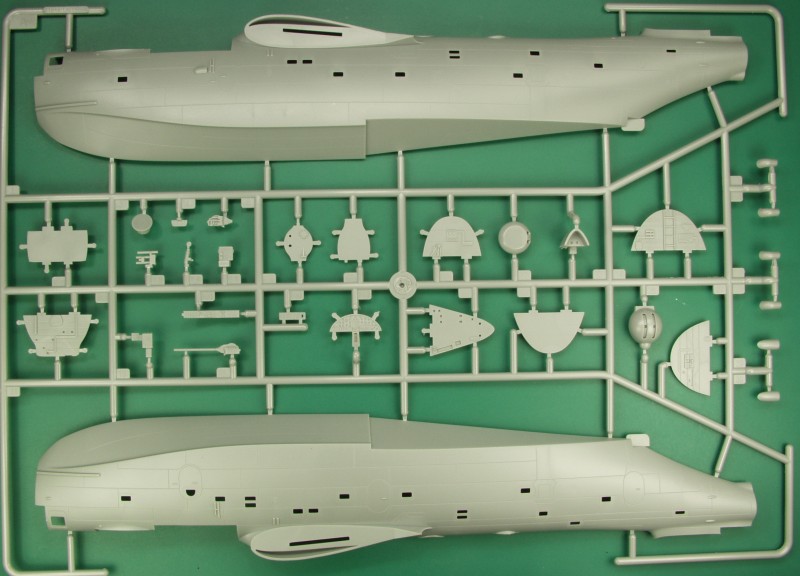
The next photo shows a close up of some of the interior parts and the
instrument panel.
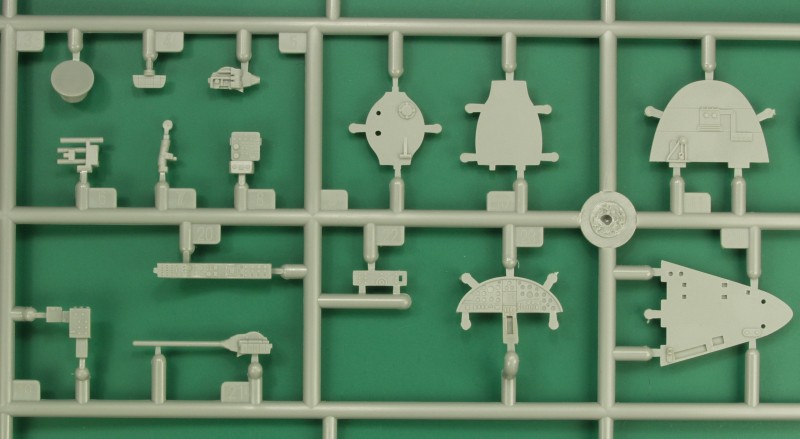
The next sprue contains the two upper wing halves, pitot tubes, fuel
dump pipes and couple cowl scoops, wing fences and a propeller. Not
sure of their purpose on a prop plane but the wing fences fit into the
slots near the end of the wings. Mold separation seams are light and
should be easy to clean up.

The next sprue has the lower wing halves, engine cowl fronts,
propeller, propeller retainers and two parts which represent the
engines which I assume are the engine crankcases and that the engine
cylinders aren't that visible in the tight fitting cowls. The kit
supplies a good assortment of under wing armaments but one will need to
open up holes in the lower wing before assembling the wing if you wish
to use them.
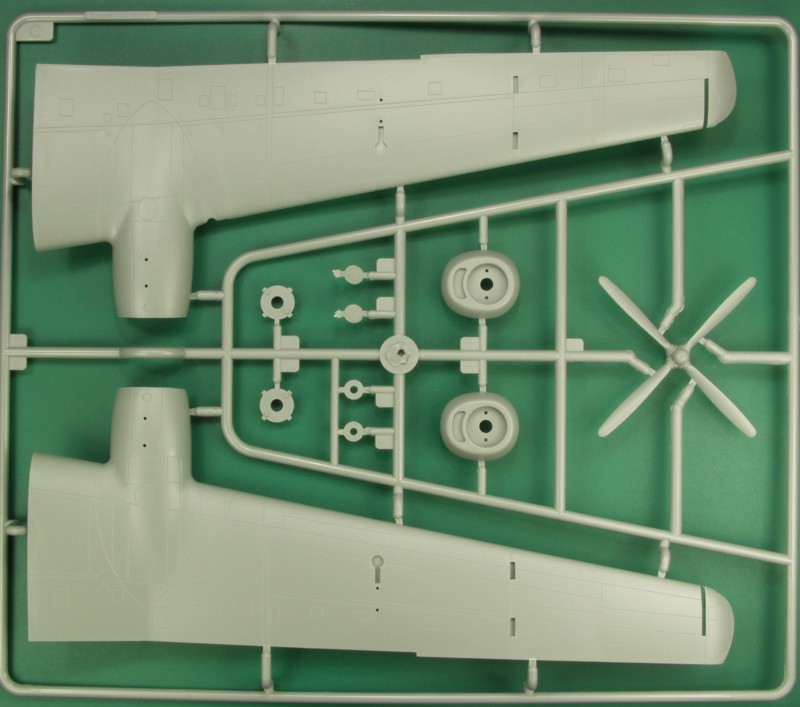
The next sprue contains mostly tail components except for the wing
ailerons and flaps and a couple intake scoops . All of the control
surfaces are molded separately. It's surprising to me that no effort
was made to simulate fabric coverings on the control surfaces unless at
some time these were switched to all metal. A lot of details on these
planes are hard to come by.
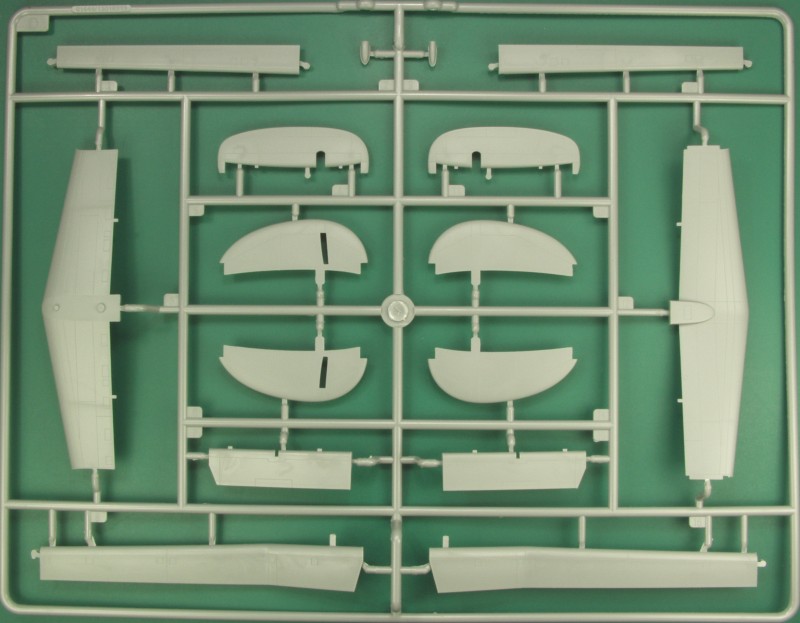
The next sprue has quite a variety of parts, besides the main cabin
floor there are a lot of the interior parts as well as the parts for
the beaching gear. Some of the smaller parts have fairly large
attachment point so some care will be needed when removing parts from
sprues.
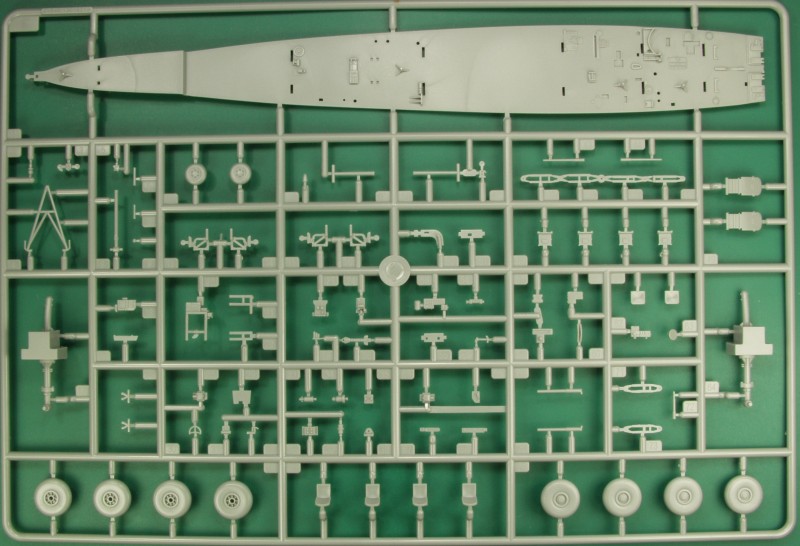
The last gray sprue contains mostly the under wing munitions along with
mounting racks for them and the two outer wing floats.
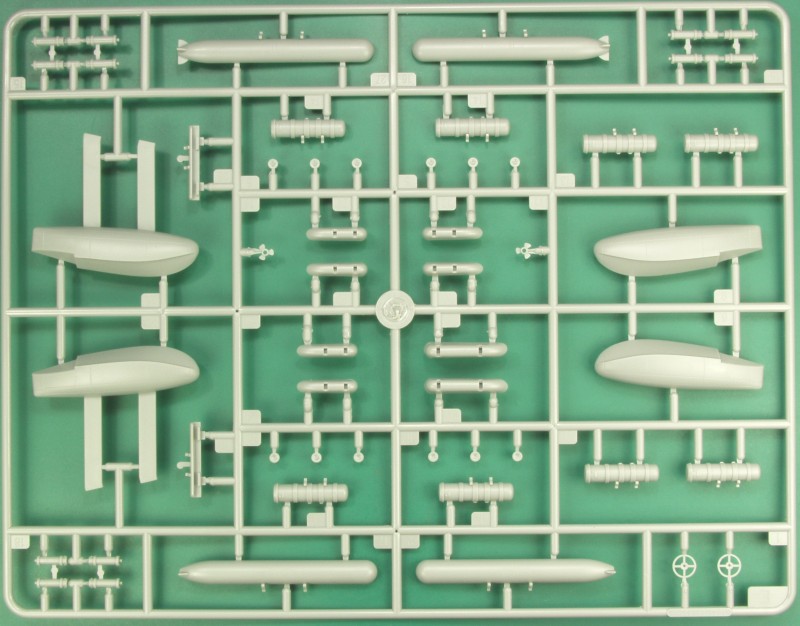
The
clear
parts are moderately thin and clear but are small so seeing all
the supplied interior detail will be difficult.
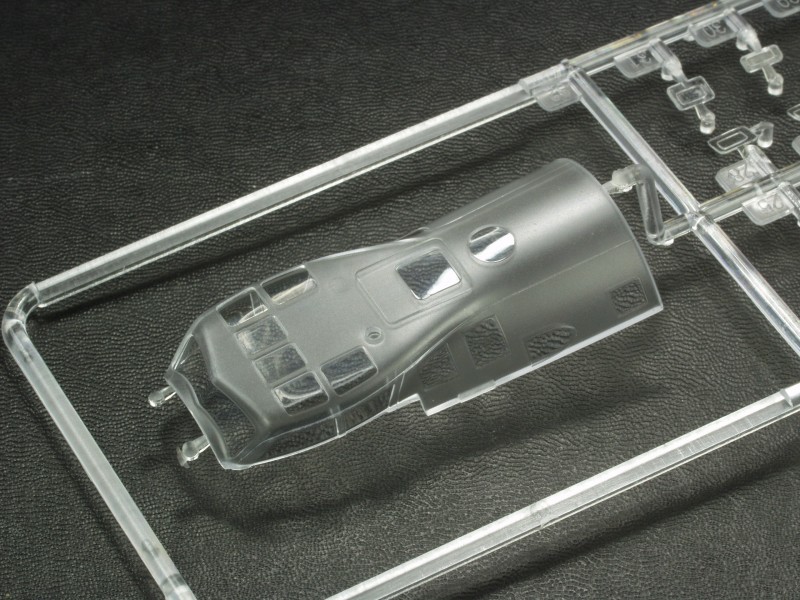
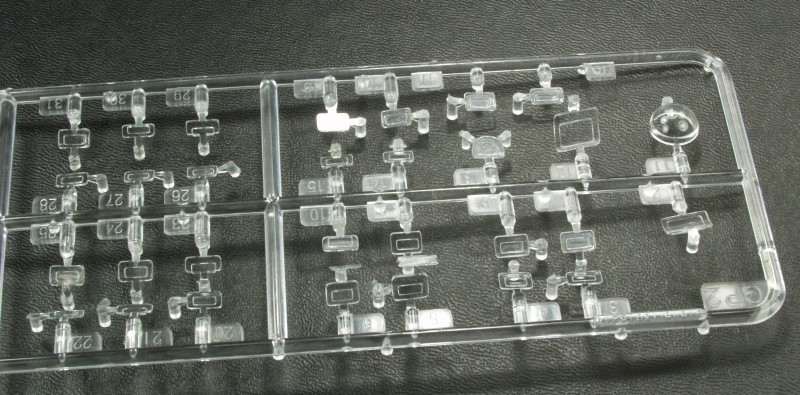
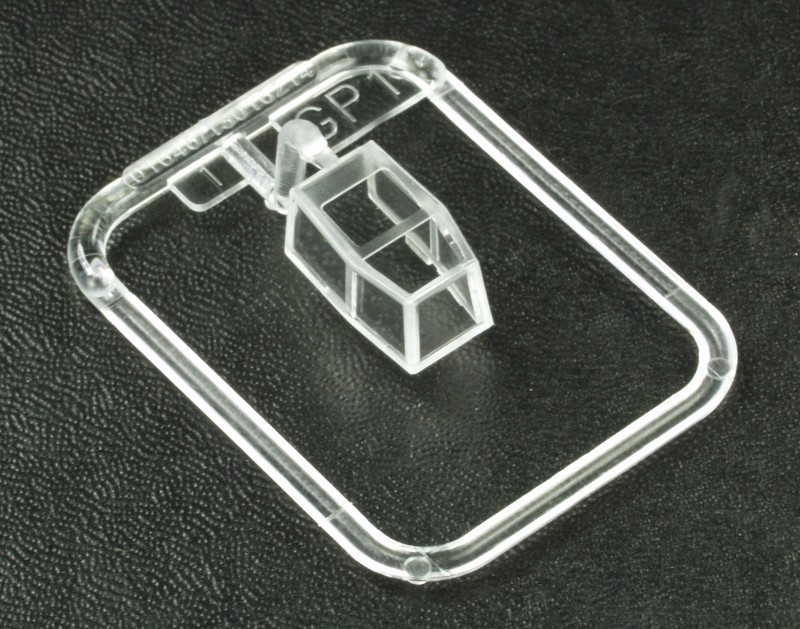
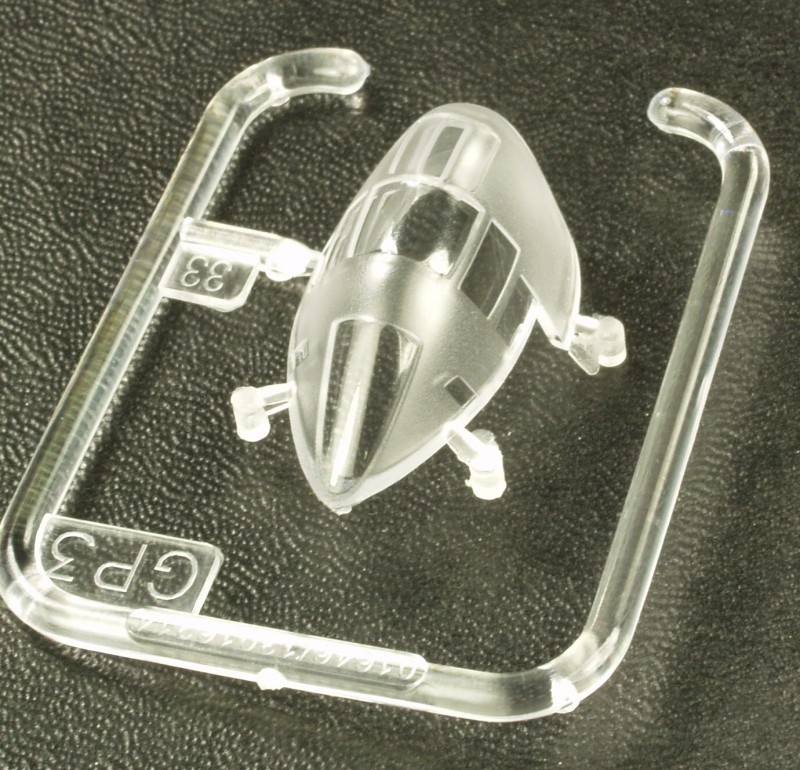
The
Decals
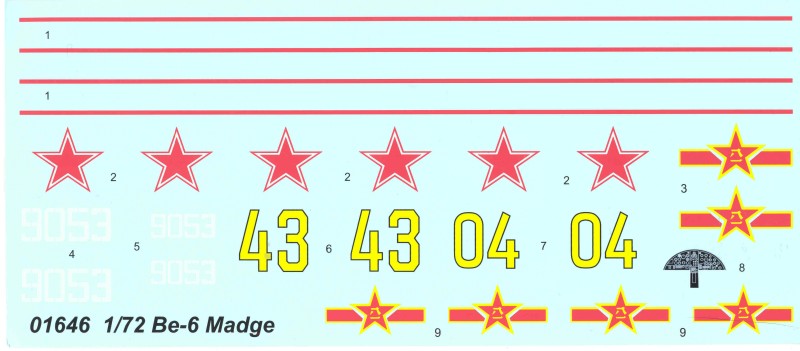
The
decals are thin, glossy, in register and have minimal clear
film except
for the large numbers. No stencils are supplied. An instrument
panel decal is supplied but I don't think there is anyway it
would fit
over the raised detail on the panel without removing most of
it. Water
line stripes are supplied but look like they would be
challenging to
apply as a single piece. Markings are supplied for two
aircraft, one in
Soviet service and one in Chinese service. My experience with
Trumpeter
decals has been mostly good.
The
instructions are contained in an A4 size booklet in
the landscape
format and stapled at the spine. The front page has
basic assembly and
decal instructions and an icon chart. Page two is a
parts map. Assembly
diagrams start on page three and continue through the
end of the
booklet with 23 assembly steps. Some color call outs
are scattered
through the instructions referencing Mr. Hobby paint
colors. Call outs
are a bit hit or miss and a good reference would be
helpful. A separate
painting and marking guide is supplied on a glossy
sheet printed on
both sides in color and it features a color chart
which crosses Mr.
Hobby colors to Vallejo, Model Master, Tamiya and
Humbrol but not all
colors have cross references.
After
Market
Goodies
I have not run across any yet.
Conclusions
This
looks to be a very nice kit and all reports I have read
state that the
fit is very good. I have had good luck with all of my
Trumpeter builds
and found them to be most enjoyable so will recommend this
one. I would
like to find some in depth information on the aircraft
itself.
Links
to kit build or reviews
I found one in box review here
References
The Osprey
Encyclopedia of Russian Aircraft by Bill Gunston
Back to
the Flying Boats page
Updated 12/12/17













